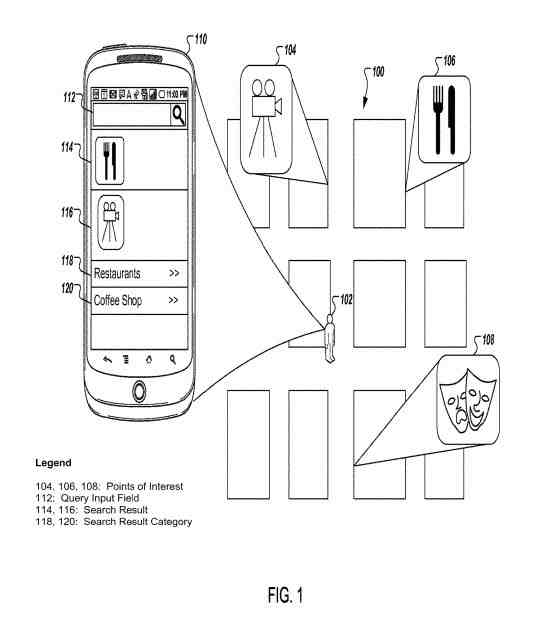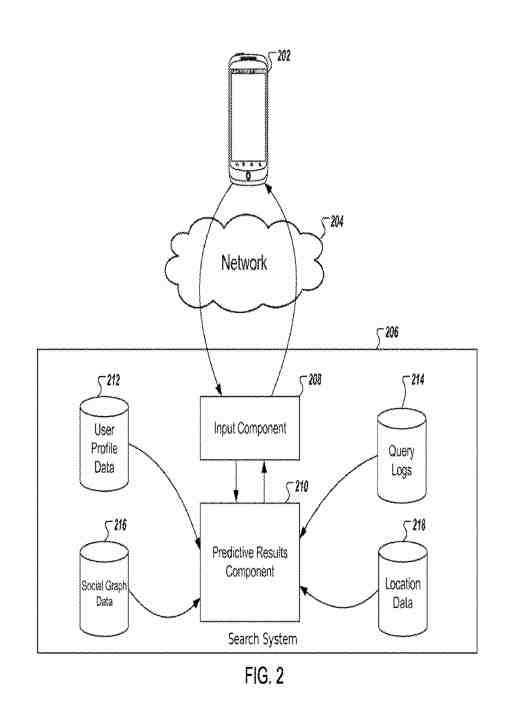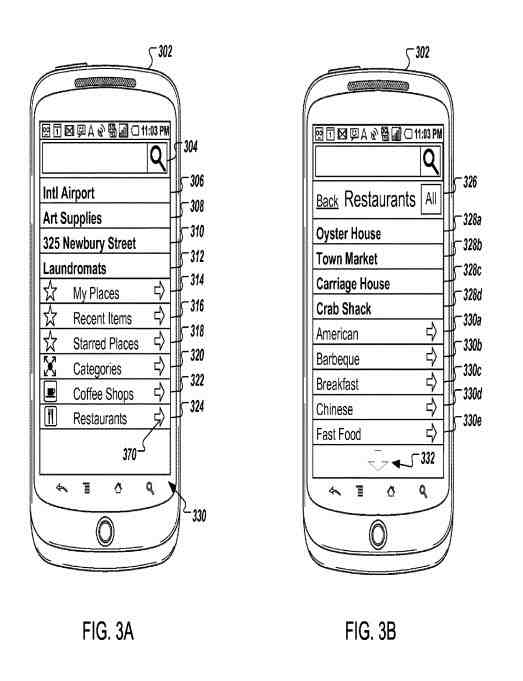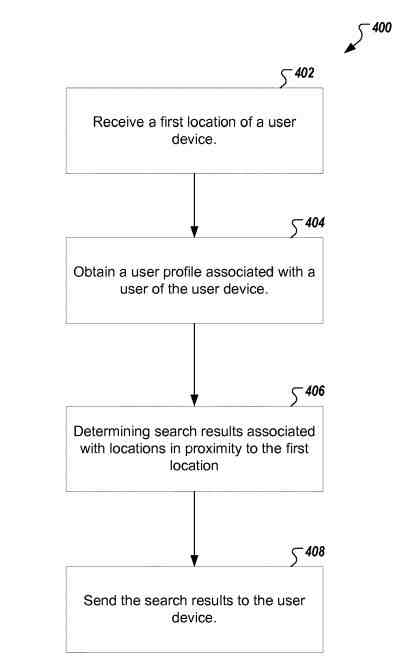Table of Contents
Predictive Search Suggestions Based on Location
This patent is about providing information relevant to search queries.
Internet search engines identify resources, e.g., Web pages, images, text documents, and multimedia content, in response to queries submitted by searchers. Then, they work to present information about those resources in a useful manner to the searchers.
Related Content:
One assumption made in search is that searchers are often interested in information specific to their location.
For instance, searchers may want to know the local weather or local politics or sports.
Topics that are interesting to searchers at one location are less interesting to searchers at a different location.
A search engine allows a searcher to provide an input for which search results respond to.
Some search engines provide search suggestions to a searcher based upon the search query entered.
And some search engines predict search suggestions based upon the current search query.
This patent application describes systems and techniques for sending messages, such as short message service (SMS) messages and voice messages, from a computer.
One innovative aspect described in this patent include:
- Receiving a first location from a searcher device
- Obtaining a searcher profile associated with a searcher of the computer
- Determining, before receiving a search request, search results associated with locations near the first location using the searcher profile
- Sending the search results to the computer
Optional Features described in this patent can include looking at:
- Social graph data for a searcher
- Query log data associated with the first location to determine the number of search results
- A Document associated with a second location near the first location
Using the query suggestion based on the first location may include using either the searcher profile data, social graph data, or query log data together with the first location to determine a query suggestion.
Determining query suggestions based on the first location may involve identifying queries submitted by prior searchers near the first location.
And predicted search suggestions based on the first location might include obtaining a searcher profile associated with a searcher of the computer.
Also, search queries based on the first location may include using information obtained from the searcher profile to identify queries submitted by earlier searchers near the first location.
Query suggestions may also include identifying queries that the searcher previously submitted.
These suggestions may include determining one or more categories associated with the search results.
Predictive search suggestions may include sending one or more categories associated with the search results to the computer.
This predictive search suggestions patent is at:
Predictive generation of search suggestions
Inventors: Amanda M. Moore, Alireza Ali, Michal Grabowski, Jocelyn C. Lin, and Evan Parker
Assignee: GOOGLE LLC
US Patent: 10,740,369
Granted: August 11, 2020
Filed: July 12, 2017
Abstract:
A method of generating search suggestions includes receiving a sign of the current location of the searcher device.
After a searcher accesses a search function on the searcher device and before the searcher submits a search request, the method includes determining search results associated with locations in proximity to the current location of the searcher device, using query log data indicating selections of past search results by searchers after the presentation of the past search results in response to respective past queries.
The method also includes determining a relative positioning of search results based on the number of searchers that selected each search result, determining categories associated with the search results, grouping the search results by the determined categories; and sending the grouped search results and the one or more categories associated with the search results to the searcher device for display according to the determined relative positioning.
A Searcher Accessing Local Predictive Search Suggestions
A searcher may be from an area that includes a cinema, a restaurant, and a theater.
The searcher accesses a search function on a mobile device, and the search function includes a query input field.
Before the searcher enters a query into the query input field, the mobile device, working in conjunction with a search system, displays search results, query suggestions, and categories associated with the locations near the searcher’s location.
For example, the mobile device displays a search result for the cinema. A location may be near the searcher if it is within a predefined distance from the mobile device (within 1 mile, 2 miles, or 10 miles).
Search results displayed on the mobile device can vary depending on the interests of the searcher.
The mobile device may not display a search result about the theater after deciding that the searcher is unlikely to be interested in such a result.
For situations in which the systems discussed here to collect information about searchers, the searchers may be provided with an opportunity to opt-in or opt-out of programs or features that may collect information (e.g., information about a searcher’s preferences, a searcher’s contributions to social content providers, searcher’s devices, etc.).
Historic Popularity Of Previously Provided Search Results
The mobile device can also display search results based on the historical popularity of previously provided search results at locations near the mobile device location.
If a significant number of prior searchers of the search system selected SERPs associated with the restaurant, the mobile device might present the SERPs as a suggestion.
The relative positioning of the search results on the mobile device can work, at least partly, based on the popularity of prior search results selected by prior searchers.
The mobile device can display suggested search queries based on the location of the mobile device and searcher profile information.
If a searcher has historically searched for “Grocery,” the mobile device may display a query suggestion “Grocery.”
Query suggestions may work with historical data collected from other searchers.
If a large number of prior searchers have searched for “Laundromat” from locations near the mobile device, the mobile device may present “Laundromat” as a query suggestion.
The mobile device can also group search results and query suggestions according to categories.

The mobile device can display a restaurant category or a coffee shop category.
The search results were determined to be most likely of interest to the searcher on the initial search screen. Then, other search results determined to be of less interest to the searcher go into categories.
Presentation of Predictive Search Fesults
The mobile device can connect to the network through many methods, such as a cellular network, a wireless network, or another radio network.
The search system may send search results, query suggestions, and categories to the mobile device.
This can happen before or while the searcher enters input into a query box on the mobile device.

The mobile device may send its location to the search system using GPS coordinates, an IP address, or another sign of the mobile device’s location.
The mobile device can also send information about the searcher’s identity, such as a searcher’s name, e-mail address, or a session identifier that enables the search system to associate the searcher of the mobile device with a searcher profile.
The mobile device may also send a partial query, such as the first few characters entered by the searcher (e.g., “Ic”) entered by the searcher (making the suggestion an autocomplete suggestion.)
The mobile device may send each character entered by the searcher as part of a partial query to the search system as entered.
The mobile device stores characters entered by the searcher until a minimum number of characters get stored. Then the mobile device sends the stored characters in a partial query to the search system.
The mobile device may wait until the searcher pauses when entering characters and then sends the entered characters to the search system.
The search system can include an input component that receives messages from the mobile device.
This input component can verify that the message from the mobile device does not indicate that the searcher of the mobile device has submitted a search request.
Verifying that the searcher has not submitted a search request may include verifying that the searcher has not used the mechanism in the searcher interface (e.g., pressing a search button) or any other mechanism (e.g., a voice command) to send input to the search engine indicating that the searcher has finished entering input.
The input component can also consider other factors, for example, whether the searcher has entered a partial query having a minimum number of characters or whether a predetermined amount of time has passed since the searcher entered the last character of the partial query.
Sending for Predictive Search Suggestions
The input component then sends the message to a predictive results component.
The predictive results component obtains query suggestions or search results based on information provided by the mobile device. Query suggestions or search results can be from query logs, location data, searcher profile data, and social graph data.
Those query logs may include a history of the search activity of prior searchers.
They can include previously submitted search queries by other searchers and by the current searcher.
The query logs can also include indications of which search results responded to the previously submitted queries selected by other searchers or by the current searcher.
Query logs can identify previously submitted search queries and search results associated with locations near the mobile device location.
Previously submitted queries could be from examining the query logs for queries submitted by prior searchers from locations near the mobile device location.
Previously submitted search results can be from examining prior query logs to identify search results presented in response to queries submitted by prior searchers from locations near the mobile device location and were subsequently selected by the prior searchers.
The previously submitted queries and search results can determine if they should go to the searcher of the mobile device as predictive queries and predictive search results.
Each prior searcher session can associate with a location.
Query Log Quality Scores
Previously submitted queries could go with a query log quality score based on the popularity of the query at the location from which the query was from.
Query suggestions may have a score based on the popularity of the search query in a given location.
Query suggestions may also get granted a score based on the search results generated from the query.
A query suggestion that previously produced search results that were subsequently selected may be superior to a query suggestion that did not produce any selected search results.
The query log quality score for the previously submitted queries and search results can be from when the input processor receives the message from the mobile device.
The query log quality score works with the number of times the query gets used, or the search result displays within a predefined distance of the mobile device (for example, 2 miles).
The query log quality score for a previously submitted query or a selected search result can get discovered before receiving a message from the mobile device. First, different locations can come from regions (for example, zip code, city, or town). Then, at regular intervals (e.g., hourly, daily, weekly, etc.), the query log quality score for a previously submitted query or a selected search result can be calculated based on the number of times the query was submitted within the region over a period of time (e.g., a week, a month, etc.).
Queries previously submitted by the searcher of the mobile device can be query suggestions.
Similarly, search results selected by the searcher of the mobile device can be search results.
Search results can get found out and scored based on location data.
Location data can include information associating resources with the location.
A web page for a restaurant can get associated with the location of the restaurant. Predictive results can identify resources associated with locations near the mobile device’s location as search results in which the searcher using the mobile device has an interest. Each search result can get associated with a location quality score based on the distance between the location associated with the resource and the mobile device’s location.
Those search results and query suggestions can be further refined using searcher profile data. For example, a searcher profile may include information that the searcher is interested in cinema but is not interested in theater. So, query suggestions and search results related to cinema get promoted, while suggestions and results related to the theater get demoted or eliminated.
Explicit Information Used in Predictive Queries
Searcher profile data can include information explicitly shared by the searcher. For example, the searcher may provide a list of hobbies and interests. This searcher profile data can also include information implicitly identified about the searcher. For example, a searcher’s previously submitted queries, selected search results, subscribed news feeds, and other collected information can identify that a searcher is interested in a particular topic.
The searcher may have an opportunity to opt-in or opt-out of programs or features that may collect such information about the searcher (such as information about a searcher’s preferences, a searcher’s contributions to social content providers, searcher’s devices, etc.). That information about the searcher may become anonymized and then stored as searcher profile data.
Searcher profile information can also include a history of other activities in which the searcher has engaged. For example, if the searcher has searched for a particular address using a mapping function associated with the mobile device, the searcher profile may store the recently searched address. Besides, the predictive results component may identify queries that the searcher has previously submitted or search results that the searcher has previously selected. The previously submitted queries and selected results may be presented as query suggestions and search results.
Search results and query suggestions may also be further refined using social graph data. A social graph can reflect social relationships between different searchers.
Two searchers may have identified each other as acquaintances, friends, or colleagues. A social graph may capture the relationship. That social graph data can indicate that a searcher may be more or less interested in a search result or query suggestion. For example, if a member of the searcher’s social graph makes available information indicating that he is currently at a particular restaurant, the predictive results component may determine that the searcher is more likely to have an interest in a resource referencing that restaurant. A searcher is also more likely to be interested in topics of interest to other members of the searcher’s social graph.
Similarly, if a member of the searcher’s social graph highly rates a restaurant, film, or other activity or experience, the predictive results component may determine that the searcher is more likely to have an interest in a resource referencing that restaurant film, activity, or experience.
The search system can provide a list of categories that are likely to interest the searcher.
The categories can be from the searcher profile data, the query logs, the social graph data, and the location data. For example, if a searcher is in Wrigleyville, Ill., the searcher may get a baseball category. The searcher’s profile may also provide information about categories. For example, if the searcher is interested in movies, a cinema category may go to them.
Categories can also be from search results and predictive query terms. In addition, categories can build on keywords associated with resources associated with locations near the mobile device.
Mobile devices provided with Predictive Search Suggestions

When a searcher accesses a search function on a mobile device, and before the searcher enters any information into the query input field, the searcher interface of the mobile device can show predictive query suggestions and search results based, at least in part, on the location of the mobile device. For example, the searcher interface may include a predictive search result for the international airport, an art supplies store, or a recently searched-for address.
The searcher interface may also include query suggestions. For example, the searcher interface displays a query suggestion, “Laundromats.”
The searcher interface may also group information that the searcher has an interest in. For example, the “my places” category may identify locations previously identified by the searcher. The recent items category group may include search queries and search results recently obtained by the searcher. The starred places category identifies search results that have been previously tagged by the searcher of the mobile device and are near the mobile device.
The searcher interface can also include a categories group. The categories group provides access to different categories that include predictive search results grouped by the resource’s content referenced by the predictive search result. The searcher interface can also display category groups directly on the searcher interface. For instance, the mobile device can display a coffee shop category and a restaurant category.
The presence of an arrow indicates that the item contains nested entries.
The mobile device can display the restaurant category on the searcher interface. In addition, the searcher interface can include predictive search results and subcategories. For example, the mobile device displays search results for “oyster house” 328a, “town market,” “carriage house,” and “crab shack.” The searcher interface also displays subcategories, for example, an “American” sub-category, a “barbecue” sub-category, a “breakfast” sub-category, a “Chinese” sub-category, and a “fast food” sub-category.
The searcher can enter a partial query “Ic” into the query input field. In response, the mobile device sends the partial query to a search service that can provide predictive queries, categories, and search results that include the partial query.

The mobile device may then display predictive search results “Moo Ice Cream Shop,” “Icapital LLC,” and “ICM.” The mobile device also displays predictive suggested queries “Ice Cream Shop,” “Ice Skating Rink,” and “Ice Supplier.”
Generating Predictive Search Suggestions

A predictive search suggestions generator starts with the identification of the location of a mobile searching device.
An Internet Protocol address can be sufficient to identify the location of the computer, or cellular tower information associated with the mobile device may be used to identify the computer’s location.
That process may get a searcher profile associated with a searcher. For example, the searcher may associate with a searcher identifier, a cookie, or a session identifier provided by the searcher device.
The searcher profile can be used to reveal a description of the searcher’s interests (e.g., hobbies, search history, etc.).
That searcher profile can also identify the social graphs of the searcher. The social graph may center on the searcher (e.g., the searcher identifies his associates). The searcher may have identified social networks in which the searcher is a member.
The searcher profile may also include information the searcher has implicitly revealed. For example, a searcher who frequently searches for model trains may have a searcher profile showing an interest in model trains. In addition, the searcher may have the opportunity to opt-in or opt-out of data collection and storage activities.
The process can determine search results associated with locations in proximity to the first location.
I have written about previous patents from Google involving predictive search results. There are a number of reasons why Google will show predictive search suggestions. Here are some of those posts:
- 09/18/2020 – Task Search Suggestions at Google
- 05/11/2020 – Search Suggestions from Previously Submitted Searcher Queries
- 05/20/2017 – Local Query Suggestions Based Upon Where People Search
- 06/10/2016 – How Google May Map a Query to Entity Search Suggestions (Updated)
Search News Straight To Your Inbox
*Required
Join thousands of marketers to get the best search news in under 5 minutes. Get resources, tips and more with The Splash newsletter: